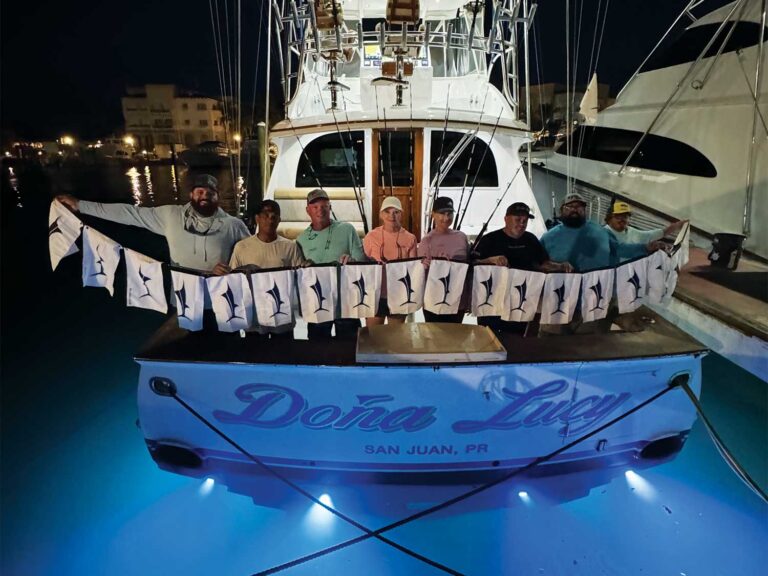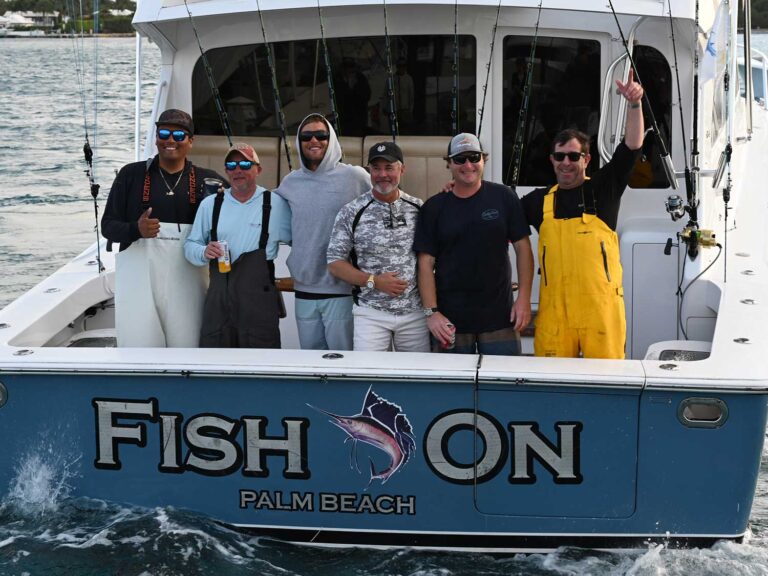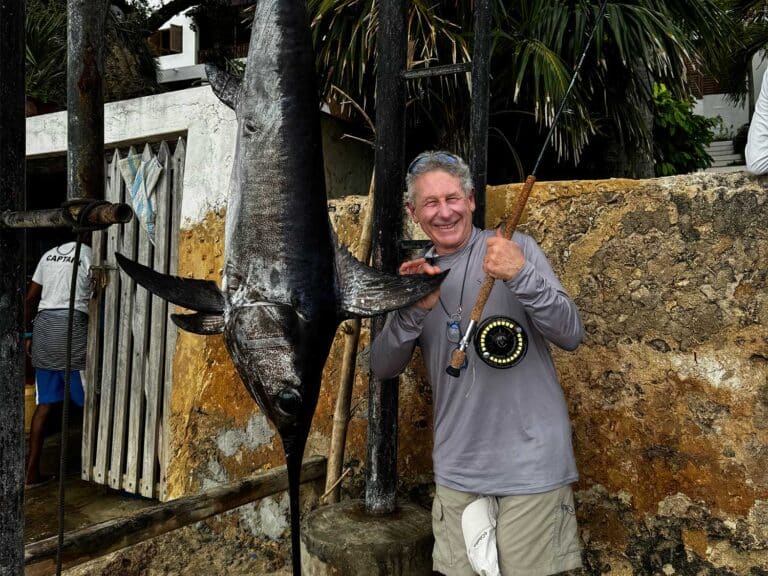
Top-shelf billfish destinations usually fall into two categories. The first offers terrific fishing but not much else to do — it’s the “eat, sleep, fish, repeat” routine. But what if you could share that passion of chasing marlin and sailfish with your spouse and kids?
With that in mind, we set out to find the top five family-friendly billfish destinations. They’re rated subjectively, with five stars being the best or most favorable and one star the least favorable based on the following categories: ease of travel, general expense, quality and range of lodging and dining options, charter options and weather. So schedule that week of vacation and pack up the family; we’re hitting the road in search of the best family-friendly fishing adventures.
Kona, Hawaii
Ah, Kona. Starting with the weather, this Big Island destination has a lot going for it, with almost always postcard-perfect weather 12 months out of the year. The fleet fishes within the lee of the island, so the seas are generally flat, and the lines go in almost as soon as the boats leave the harbor — no long runs to the fishing grounds there. This combination makes it a perfect destination to introduce younger children to sport fishing.
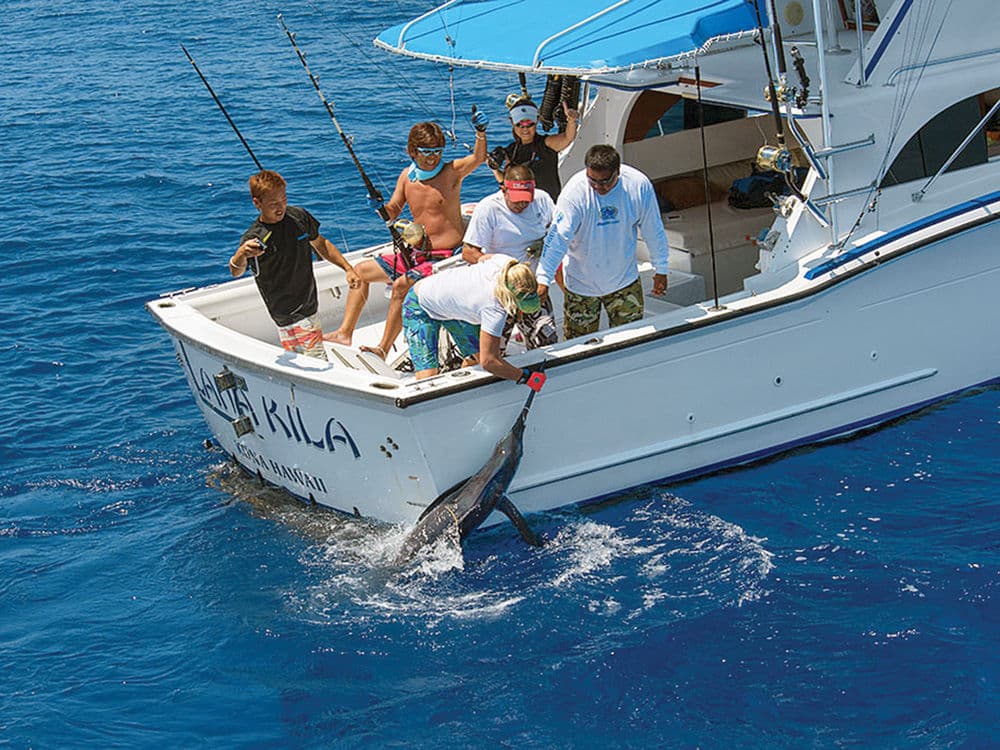
Another added bonus is the relatively low cost of charters, which are widely considered a good value for the money because most of the day is spent fishing and not running back and forth to distant fishing grounds. There are several top-notch boats and captains available for about half of what you’d expect to pay in most other destinations, so it’s entirely possible to fish for a few days without maxing out the plastic. Kona is home to some of the top names in the sport: world-record holders, tournament winners, Billfish Foundation top-tagging captains and more. The charter list reads like a who’s who of sport fishing: Marlin Parker, Kevin Nakamaru, Neal Isaacs, Rob Ellyn, Kevin Hibbard, Teddy Hoogs and several dozen more are all seasoned professional skippers.
Kona is also one of the very few places in the world where you can take a half-day charter and have a reasonable chance of catching a marlin. Need to catch an afternoon flight home? Book a four-hour trip in the morning, and you might still be drying off the salt water on the way to the airport.
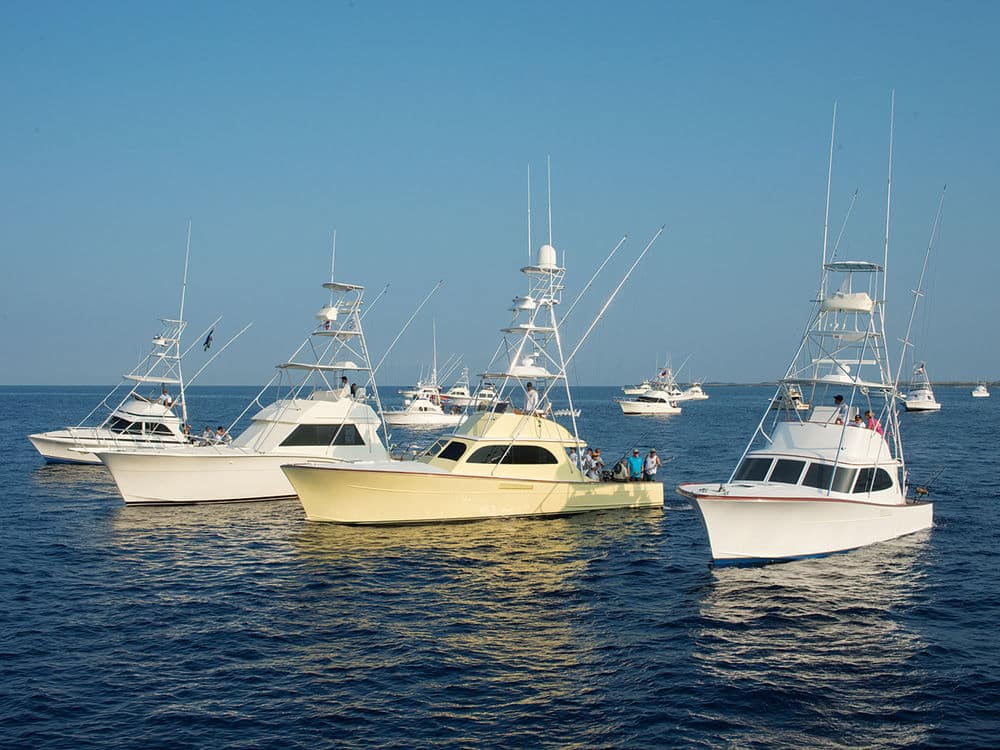
Most of the action centers on Honokohau Harbor, which is conveniently located between the Kona airport and the town of Kailua-Kona. It has a convenient booking desk to help with reservations, but as with most other destinations, the top boats will go quickly, so book early to make sure you get your top pick. Lodging options abound, and dining is just as easy.
Off the water, the options are limited only to your budget and imagination. Feeling adventurous? Take a helicopter tour of the island, go for a hike or take the kids surfing. Ask your charter captain if whale-watching is available, or just hang out on the beach and watch the sun slowly set on the Pacific.

Now for the downside. Kona is a long way for most. There are some nonstop flights available, but expect some very long travel days on either end of the trip. Hawaii is an island in the middle of the Pacific, so everything that’s not grown there has to come in by air or sea; that usually means a higher price for groceries and meals. But there’s no passport required, no hassles with customs and no issues with a foreign language.
St. Thomas, U.S. Virgin Islands
A bit closer to home, especially for those of us on the East Coast, is the blue marlin hot spot of St. Thomas. It’s located in the U.S. Virgin Islands, right in the heart of the Caribbean Sea.

When you imagine an idyllic Caribbean island, with impossibly clear-blue waters, sugar-white-sand beaches and some of the most picturesque scenery imaginable, that’s St. Thomas. And for decades, the North Drop has attracted blue marlin in such numbers that the island has gained worldwide notoriety for excellent marlin fishing, especially around the full moons of July, August and September.
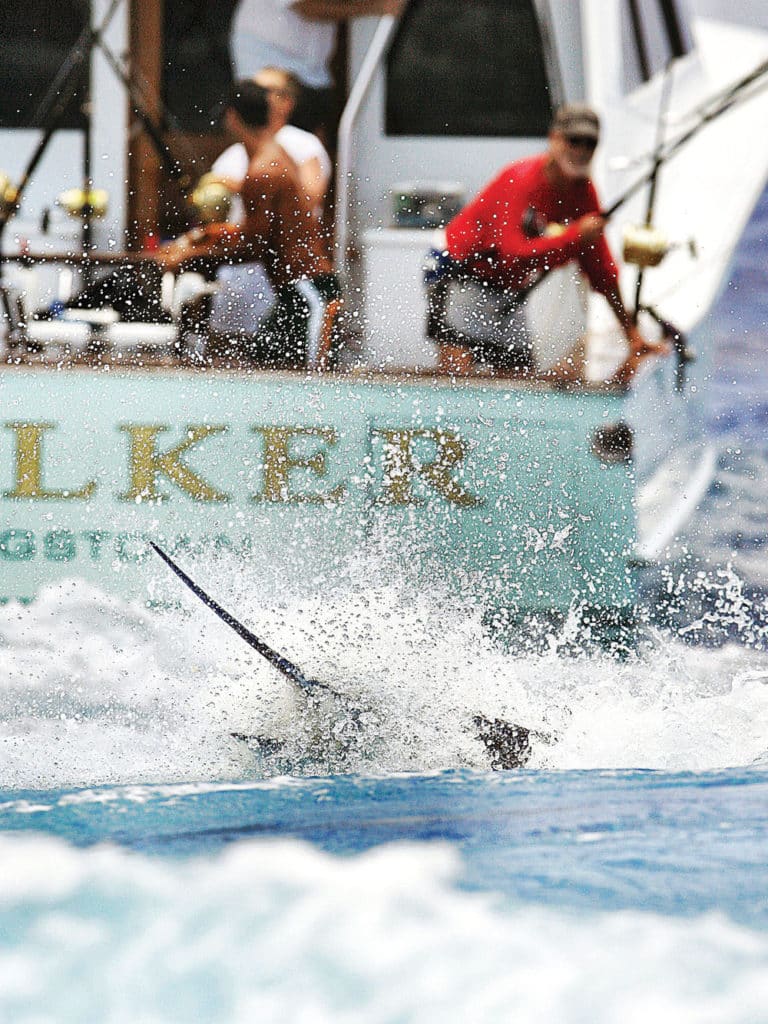
Charters are readily available, but you won’t find dozens of gleaming sport-fishermen lined up and ready to go. As long as you do a little research ahead of time — and specify that you want to go marlin fishing — there are enough good choices to go around. The island’s primary marina is American Yacht Harbor in Red Hook, a small community on the island’s eastern coast. You can also check in with Stewart Loveland’s Neptune Fishing Supplies (neptunefishingsupplies.com) in Red Hook for updates, information and fishing reports.

As a top tourism destination, St. Thomas’ options for eating, drinking and sleeping are nearly limitless and are dependent upon only the budget. Most families choose from the quaint small hotels and island-style resorts along the coast, within walking distance to the beach. Snorkeling is a big nonfishing draw thanks to the crystalline water and amazing underwater life close to shore. Beginners will instantly become hooked, and experienced snorkelers will find this to be a memorable experience.
But with every benefit comes a drawback: The dark side of St. Thomas can be the weather. When the winds pick up, the North Drop can be pretty salty, and although there are days where it’s beautiful, they’re often outnumbered by the snotty ones. The good news is there’s plenty to do back ashore if the family doesn’t feel comfortable with the forecast on your scheduled fishing days.
The Outer Banks, North Carolina
It’s one of the true birthplaces of American sport fishing: the northern Outer Banks of North Carolina. This string of barrier islands stretches from the Virginia border south along the Carolina coast. The bulk of the Outer Banks charters are based around Manteo at Oregon Inlet, with additional boats located down in Hatteras. If a marina full of 50- to 60-foot charter boats gets your pulse racing, then you’ll be in heaven here. Between the Oregon Inlet Fishing Center and Pirate’s Cove Marina there are scores of truly top-flight boats that fish offshore year-round, with some of the world’s finest captains and crews. August and September highlight the peak white marlin bite, and blues are available at any time during summer and fall. Winter brings bluefin tuna if you’re looking for a heavy-tackle pull.
Although the Outer Banks is a tourist destination, take a break from the mundane hotel room and look into renting a small beachfront cottage through a service like HomeAway or Airbnb. The rates often are reasonable, and this gives you the option of eating meals in rather than dining out every night. Charter rates average around $1,900 for a full day in the Gulf Stream. Off days are great for hitting the beach and the surf, but don’t miss the Wright brothers memorial at Kitty Hawk, where they made their historic first flight. There are the lighthouses at Hatteras, Bodie Island and Currituck to explore, and a day trip down to Ocracoke Island is also well worth it.
If there’s a drawback to the Outer Banks, it’s that it’s tough to get there from just about anywhere. The closest international airport is in Norfolk, Virginia, which lies a few hours north of Manteo. Those on the East Coast can make the trip by car; coming up from the south, it’s fun to take the big car ferry from Cedar Island to Ocracoke and then over to Hatteras Island. It’s a scenic drive, and kids have a blast on the ferry crossings, so if you’re looking for the ultimate family road trip, this one’s a great choice.

Costa Rica
It’s the first international destination on the list, and that means the family will need passports. But aside from that, you’re just about guaranteed to have a great trip when you head for the Pacific coast of Costa Rica. There are reasons why this rainforest-meets-the-sea destination is so popular: great fishing, terrific lodging and off-the-charts sightseeing.
After arriving in the nation’s capital city of San Jose, most visitors will head either for Los Sueños Resort Marina or the seaside community of Quepos, about 45 minutes south of Los Sueños. Los Sueños hosts one of the largest charter fleets in the nation, plus a variety of available condos in addition to a Marriott resort. Rent a golf cart and you’ll never have to leave the resort; there’s fishing, dining and drinking, shopping, sightseeing and even golf available right on property. Meanwhile, Quepos is the gateway to Manuel Antonio, one of the nation’s best-loved nature parks. The guided rainforest tours are not to be missed, especially for any budding naturalists in the family, and the white-faced monkeys, colorful toucans and elusive sloths are kid favorites. Picturesque hotels and great local restaurants abound in the hills above Quepos as well.
There are tons of charter-fishing options throughout the country, ranging from proven tournament winners to inshore pangas targeting jacks and roosterfish in the surf. And when the bite’s on, it’s really on. Boats release anywhere from five to 30 sailfish on the better days, often with a marlin or two thrown in for good measure. For kids looking for action, this is the place.

Fuel prices are high in Costa Rica, so expect to pay $1,800 to $2,000 a day for offshore charters. The prime season for marlin and sailfish is from late November through April, and the hot, sunny, calm conditions make it a perfect getaway for those with a case of the winter blues in the States. In summer, the fishing gets good up to the north out of Marina Papagayo and Flamingo. For a taste of old-school Costa Rica sport fishing, head a few hours up the coast from Los Sueños to Carrillo. All are excellent family destinations, especially for those on their first trip out of the country.
The Bahamas
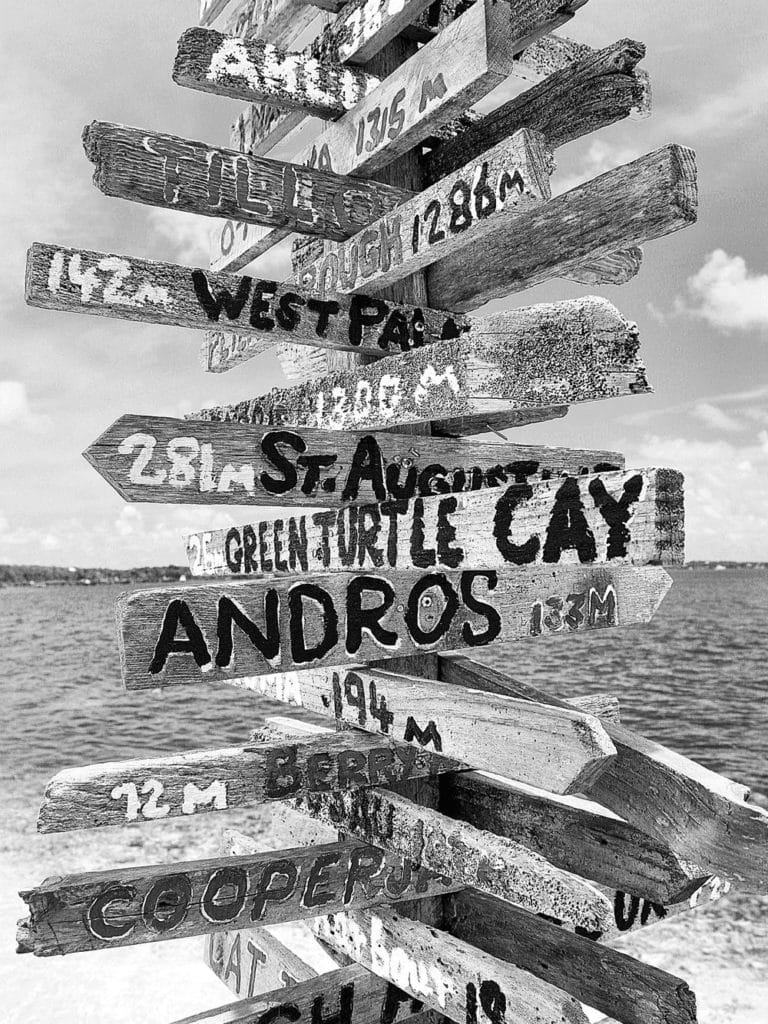
Many a kid growing up on the East Coast had their first experience offshore fishing in the Bahamas. It’s especially favored for those living in coastal Florida, where this nation of 300-plus islands is just a few hours away by boat. The fishing might not be quite as prolific as in some of the previous destinations, but for the most part, the Bahamas represents an easy destination to travel and fish for the family, especially if you’re in your own boat and can do a little island hopping. Some charters are available, but it’s best to work out those arrangements well in advance to ensure you’re getting the right crew on the right boat because quality can vary wildly.
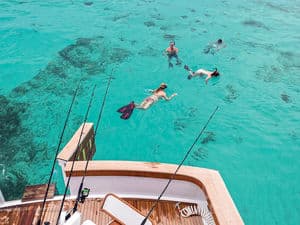
Throughout the Bahamas, snorkeling is a nonfishing pastime and there’s also great sightseeing in places such as Man-O-War Cay. And although the adults might head to Nipper’s for its world-famous Sunday pig roast, the kids get more of a kick out of pizza night at Treasure Cay, an occasion that draws local families and tourists alike to the open patio by the resort’s pool. With its ease of travel, high safety factor and good fishing, the Bahamas is more of an entry-level destination and a way to get everyone started down the path of the traveling angler.




